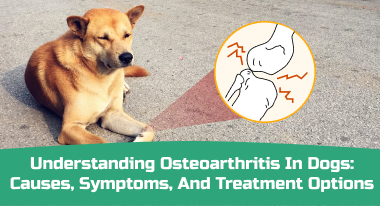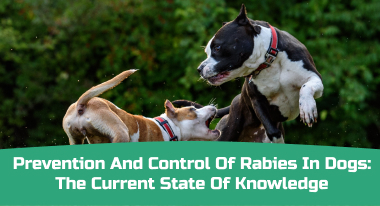Table of Contents
Labradors are known for their boundless energy and enthusiasm. But this can also turn out to be a double-edged sword in maintaining their health. In order to keep their high energy level under control, labs need frequent walks and plenty of games and activities. However, the breed’s heart is prone to a few problems and pet parents being aware of this will help.
These issues become especially problematic during their senior years as they undergo rapid development. Fortunately, most of these conditions have preventable causes that you can address with the aid of your vet. However, in their senior year, Labs suffer from specific health problems that can negatively affect their well-being. If you see some changes in your pet’s behavior or if you notice any abnormalities in your pet, such as oily coat, lethargy, and weight loss, it’s time to get acquainted with some of the common health problems that Labretriever dogs can suffer from.
In this blog, we have discussed the common health challenges faced by Labradors, how they’re treated, and how preventative measures can help keep your dog happy and healthy throughout its lifetime. Let’s read on
What are the most common Health Issues of Senior Labrador?
There are three main categories of health problems that pet parents are most likely to encounter. They include joint problems, obesity-related conditions, and in some cases,cancer. There may well be some overlap between these conditions, and the causes may be hereditary, environmental, or a combination of the two.
Inherited Labrador Illnesses
- Arthritis
Because of its large size, the Labrador is particularly vulnerable to arthritis. It can occur at any point in the dog’s life and is painful. Large-breed Labrador dogs are more prone to developing arthritis. Genetic and environmental factors are the main reasons for this painful condition in Labs. To keep your dog from getting arthritis too early and to manage it less painful, it is critical to be knowledgeable about the signs.
- Hip Dysplasia And Elbow Dysplasia
The Labrador Retriever is a healthy and well-built dog. However, it is susceptible to serious joint conditions. Hip dysplasia and Elbow dysplasia are both strongly inherited and caused by genes, but the genes that cause them haven’t been identified yet. In addition to genetic traits, the environment also plays a significant role in how a Labrador’s joints develop and how badly they are injured.
- Progressive Retinal Atrophy
Rod-cone degeneration, the most common form of PRA in Labs, is a disease that causes retinal deterioration and eventual blindness. It is the most prevalent type of PRA in dogs. In progressive rod-cone degeneration, rod and cone cells in the eye usually develop but then develop a mutation and eventually die, resulting in blindness.
Progressive rod-cone degeneration can occur at any age, from one year up to seven years old. If your Labrador’s eyes appear fuzzy or shiny, or if his behavior changes, he may be suffering from this affliction. One of the earliest signs is night blindness, which then progresses to total blindness. If the symptoms of PRA are detected early, it may be possible to slow or prevent the progression.
Vets perform an eye examination (which detects the disease once it has begun to develop) and an Optigen genetic test to detect this condition. A number of less common hereditary disorders are also identified using DNA testing, including centronuclear myopathy (CNM) and exercise-induced collapse (EIC). However, another condition that millions of Labrador retrievers are affected by is entirely environmental in origin, known as chondrodysplasia.
Table: 1
| Inherited Disease Name | Symptoms |
Arthritis | * Limping * Stiffness of movement * Swollen joint, Hunched back * Increased sleep * Reluctance to be petted * Reluctance to jump or climb stairs * Difficulty standing up or laying down |
Hip dysplasia | * Limping * Hind leg lameness * Stiffness * A bunny hopping gait. * Trouble getting up from a nap * Difficulty walking up or down stairs |
Progressive Retinal Atrophy | * Progressive loss of night vision * Day vision degeneration * Cloudy Eyes * Reluctance to go down the stairs or jump down steps * Decreased color of the pigment of the eyes * Cataract * Dilated pupils in both eyes |
Common Diseases in Senior Labrador
- Hearing loss in old Labs
Some dogs will get hearing problems in old age. If your pet does not respond to your commands, it may be suffering from hearing loss. Sudden and uncontrolled aggression and excessive barking may be observed. You might notice that your pup doesn’t respond to your commands.
Hand signals are a great way to teach your pet the first commands, and they could be helpful if your dog loses its hearing. If your dog is deaf and microchipped, or if the collar has contact information, you should use dog collars that announce that your dog is deaf. It is critical to learn hand signals as soon as possible. If a dog is lost, microchips and contact information are vital.
- Obesity
A Labrador can be overweight due to its love of eating and age-related laziness. It is especially prevalent in older dogs that sleep most of their time. Although a chubby Labrador may be adorable, it is actually unhealthy. Obesity can cause heart and liver disease, joint diseases such as arthritis, and various respiratory disorders.
- Cancer
Certain dog breeds, including Labrador retrievers, are at a higher risk of developing cancer. Labrador retrievers are susceptible to mast cell tumors, lymphoma, and mammary gland tumors, among the most frequently occurring canine ailments. In addition to mast cells, lymphoma can also occur in other tissues in the respiratory system, intestines, and skin. Lymphoma in lymph nodes is another common canine malignancy. As cancer is one of the most pressing concerns for Labradors of all ages, any signs should not be ignored and should be taken to the Vet at once. You can leverage an online vet directory like GreatVet to find a specialised vet in your area.
- Vision loss
Vision loss in older Labrador dogs is likely to occur. Old labradors might experience two common eye issues, nuclear sclerosis, and cataracts. Cataracts develop in approximately one in every five dogs before age five and after that age. Cataracts can cloud the lens of the eye and impair vision if not treated well enough to resolve entirely by 5-9 years old unless vision problems are well controlled too. Dogs over eight years old with moderate cataracts may be left untreated or may see well with glasses or contact lenses once their eyes are healthy enough below their cataracts.
A cataract may be removed surgically, and the dog’s vision may be restored. Nuclear sclerosis, on the other hand, can be challenging to diagnose and treat. You should visit your Vet if you observe any of the following signs:
- Your dog bumps into walls and furniture.
- It is unable to locate food, water, and toys.
- Your dog is clumsy.
- Your dog is more anxious.
If your dog’s furniture pattern has not been altered, it might be difficult for him to explore the house.
5. Canine Cognitive Dysfunction
All ageing dogs lose some of their senses, but if your pet appears disoriented or confused, it might be suffering from Canine Cognitive Dysfunction or CCD, an illness that affects the mind. CCD is not curable, but some drugs can help alleviate signs of the disease. The vet prescribes medicines such called Anipryl helps alleviate some symptoms of cognitive dysfunction in particular dogs. It prolongs dopamine activity in the brain.
In addition, because of their age and weight, senior dogs are particularly susceptible to heart disease. Their hearts will slow down and pump erratically, rather than abruptly experiencing a “heart attack,” as human beings would. Dogs do not experience a sudden “heart attack” as humans do but instead have a slow and erratic heart rate.
Table: 2
| Common Geriatic Disease | Symptoms |
| Hearing loss in old Labs | * No response when called by name * No response when you enter the room * No response to other dogs barking * Difficult to wake * Startled when woken * Excessive barking |
| Obesity | * Weight gain * No or little visible waistline * No palpable rib cage * Excess body fat * Distended abdomen * Lack of grooming * Lack of mobility * Lethargy * Difficulty breathing |
| Canine Cognitive Dysfunction | * Disorientation * [altered] Interactions with family members or other pets * Sleep-wake cycle changes * House soiling * Activity level changes |
| Cancer | * Unexplained swelling in the lymph nodes * Unhealed wounds * Weight loss or gain * Discomfort in breathing * A difficult time breathing * Visible masses occasionally |
| Vision loss | * Pawing at the eyes or face * Eyes become cloudy * Bumping into objects * Reluctance to go up or down stairs, or jump onto furniture * Swollen, puffy or inflamed eyes * Eye irritation or pawing at face * Confused, dazed, easily startled |
In addition, canine urinary incontinence is a sign of old age in your Labrador. Urinary incontinence is a characteristic of Labrador aging that occurs spontaneously. A range of health conditions can cause urinary incontinence, so it’s essential to consult your veterinarian to inspect for possible underlying diseases. In addition to small amounts of urine, bladder emptying occurs in most cases. Managing your dog’s urinary incontinence may entail taking it for walks frequently, using dog diapers, or other solutions.
To help you more brevity on the senior labrador health issues, we have created an infographic with visual illustrations. Let’s have a look:

How to Know If Your Pet is Ready to be Classed as senior?
When Labradors get old, they slow down considerably. They will walk slower, take longer to climb the stairs, and sleep for more extended periods of time. The most prominent signs of ageing are slowing down and becoming less active.
Since your Labrador’s metabolic rate has slowed, the pet may start to put on weight. These are all indications of ageing and are not reasons for concern. However, because ageing causes numerous health problems, you should be especially mindful of them. Some of these problems can be treated, while others are just a consequence of old age and can be accepted only with love and understanding.
Based on genetics, the lifespan of your average Labrador is between 10 and 14 years, but several factors will influence your Labrador’s health as it ages, including genetics and environment. Watching the food intake and increasing exercise will help in longevity.
How To Know If Your Senior Pet Is Unwell ?
There are a number of signs that your senior Labrador may be sick. One of the most common signs is poor appetite. It is not unusual for senior Labradors to lose their appetite, but it can be an obvious sign of illness if your dog has stopped eating entirely. You should also be concerned if you notice any changes in your dog’s behavior, such as changes in cognitive function or mobility.
Another common sign of illness in senior Labrador dogs is loss of coat quality. This can manifest in several ways, including dry, dull fur, scaling patches, and hair loss. In more severe cases, you may notice sores or open sores on the body or face.
Other signs include difficulty breathing, difficulty walking, and increased movements in the abdomen or hocks (feet). If you suspect that your senior Lab may be sick, you should take him asap to the veterinarian for a consultation as soon as possible.
Symptoms that show Labrador is sick:
- Lack of energy
- Loss of Appetite
- A lazy and lackadaisical attitude
- Sitting abnormally or with hunched back.
- Silence and/or display grumpiness in the presence of people. Protective behavior towards the owners includes refusing to leave your side and giving you space to do things alone. Avoiding eye contact with the company.
How To Take Care Of Senior Labrador
Like humans, senior canines must feel comfortable and safe in their surroundings. Following are few tips on how to take care of an old dog:
- Give your dog plenty of exercise and fun activities. Take them on long walks or short runs in the yard. Take them for walks around the neighborhood or park. Play games together such as fetch, tug-of-war, or hide-and-seek. Take them for car rides or bike rides if they are old enough and willing.
- Keep your dog’s environment clean and comfortable. Provide a comfortable crate for sleeping in at night or during inclement weather. Give them access to plenty of toys and treats to keep them active and content.
- Feed your dog a quality food designed for dogs his age and weight that is high in protein with limited carbs and fat (ideally around 25% protein, 70% carbohydrate, and 15% fat). Make sure they are getting adequate vitamins and minerals from their food as well. Check with your veterinarian about any specific diet guidelines for your dog’s breed or health condition.
- Provide regular veterinary check-ups and preventive care such as vaccines, heartworm prevention, flea/tick/pest control, blood tests, etc. Your vet can help you determine which is best for your dog based on age, health history, activity level, etc. Don’t wait until something goes wrong – get early detection and treatment!
- Be attentive to signs of pain or discomfort, including limping or sluggishness, weight loss/gain, and alternating or sudden changes can all be signs of illness or injury requiring immediate veterinary care.
Always contact your veterinarian if you notice any unusual behavior changes in your dog, such as aggression towards other animals or humans, excessive anxiety (shaking/biting at the door when someone comes over), urine marking/potential house soiling behavior (pottying indoors instead of outdoors), walking slowly or stiffly with occasional falling down (potentially disease/injury related), constant whining/whining even when alone, hiding under tables/beds/couch all day (anxiety-related), vocalizing more than usual.
Final Thought
Senior dogs require extra comfort in order to stay happy at home. Senior dog care starts at home. If your Labrador is aged, you should make sure he has a thicker mattress or padding added to his bed so he can sleep more comfortably. You can make or buy ramps that your dog can use to eat his dinner, but you should first consult with your vet to see if he is a fast eater. Raised feeders can help him eat more efficiently. You may also have to adjust your routine a bit if he appears to be struggling to get on or off the strip. Ramps can be a handy addition.
In order to keep your aged dog active and healthy, you should make sure to continue offering regular exercise sessions. If your dog finds an hour-long walk too much, then you should scale down the quantity a bit. This can help him work off his stress more strategically. If he doesn’t want to go on longer walks, he may suffer from aches and pains. Furthermore, as dogs age , like humans they frequently experience muscle pain, which can be managed by taking pain medication daily. Keeping this in mind, it may be worth bringing your pet to your veterinarian.



